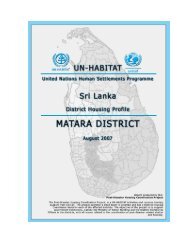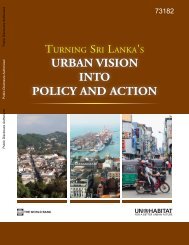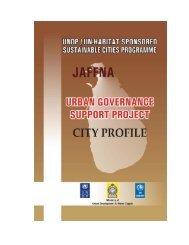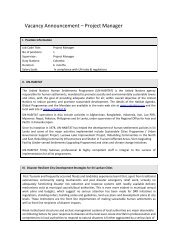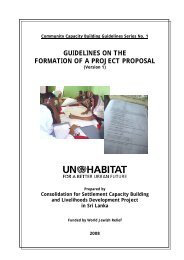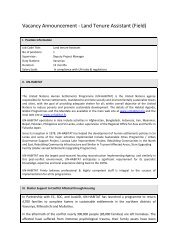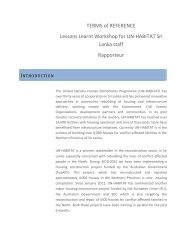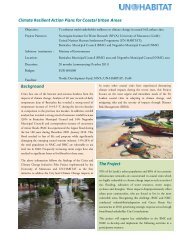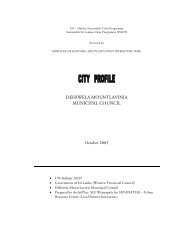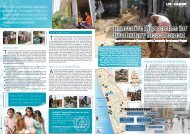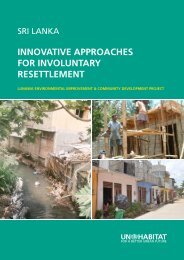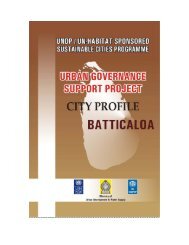Conference Proceedings : âJANASEVANAâ National ... - UN HABITAT
Conference Proceedings : âJANASEVANAâ National ... - UN HABITAT
Conference Proceedings : âJANASEVANAâ National ... - UN HABITAT
You also want an ePaper? Increase the reach of your titles
YUMPU automatically turns print PDFs into web optimized ePapers that Google loves.
Housing and Quality of life: A Sri Lankan Experience<br />
Professor. U.A. Chandrasena, Department of Geography, Kelaniya<br />
Prof. Chandrasena discussed the science of human settlements where there are clear inter‐relations amongst nature,<br />
man, networks, society and “shells” (housing).<br />
He stressed that housing is a basic human need encompassing a broad<br />
spectrum of activities. Without appropriate shelter, people cannot<br />
meet their basic needs and participate adequately in society.<br />
Therefore housing is a fundamental component of quality of life.<br />
Though it is generally identified only by the house design, a house is<br />
man’s most personalised and intimate place of living.<br />
Article 25 of the Universal Declaration of Human Rights states: ‘Everyone has the right to a standard of living<br />
adequate for the health and well‐being of oneself and one’s family, including food, clothing, housing and medical<br />
care and necessary social services.’ (United Nations, 1948)<br />
In December 1991, the right to adequate housing was defined under international human rights law, when the United<br />
Nations Committee on Economic, Social and Cultural Rights adopted General Comment No. 4 on the unanimous right<br />
to adequate housing.<br />
The changes in a Housing stock broadly fall under three categories: Quantitative change : due to factors such as<br />
increasing population, urbanization and family formation; Qualitative change : which looks at replacement of obsolete<br />
houses, improvement of substandard houses; and change in the relative position of householders: which results in<br />
changes to the housing stock.<br />
In Sri Lanka, there were different growth rates of housing stock and population at successive censuses but insufficient<br />
supply of houses has created a backlog of housing needs that have to be met by an acceleration of housing<br />
development.<br />
Growth rates of population and Housing Stock<br />
Pop/Housing<br />
stock<br />
1953‐63 1963‐71 1971‐81 1981‐2001<br />
Population 30.7 20.1 17.0 26.6<br />
Housing<br />
stock<br />
29.4 12.4 26.9 41.0<br />
Permanent<br />
housing<br />
stock<br />
15.4 28.0 49.3 92.8<br />
Based on censes of population and Housing<br />
<strong>Conference</strong> <strong>Proceedings</strong> – <strong>National</strong> Housing Symposium 6



